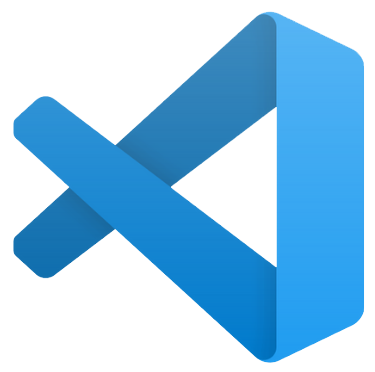Key Considerations for Adding AI to Your Modernization Strategy
Jason McGee, IBM Fellow, CTO IBM Cloud, GM Cloud Platform and Common Services, on how artificial intelligence is changing the way we think about modernization
By Dava Stewart
Normalizing Mainframe Application Development: A Risk-Managed Approach
Broadcom’s Peter Wassel explains how a risk-managed approach to mainframe application development enhances productivity and addresses staffing challenges
By Peter Wassel
Software development has advanced lightyears over the past decade, fueled by the demands of the digital revolution: CI/CD pipelines, open-source standards like Git and collaborative development and the meteoric rise of Visual Studio Code (VS Code) are a few examples. And others like self-service developer platforms and AI-assisted programming are fast-emerging.
These advances have raised the bar in terms of business agility and the difference between the state-of-the-art and the mainframe status quo is stark. As a community, we need to eliminate this gap by normalizing mainframe application development to enterprise standards. Beyond making developers more productive, normalizing AppDev enables them to be used more freely across platforms, addressing the constant staffing challenges. It elevates team morale, too.
When normalizing mainframe AppDev, what alternatives to a disruptive lift-and-shift approach exist?
The risk-managed approach opens the mainframe to best-in-class capabilities with limited to no disruption. Four principles underpin this approach:
The Risk-Managed Approach to AppDev




This isn’t just marketing—we’ve practiced risk-managed modernization within the Broadcom Mainframe Software Division and have experienced the many benefits. Pairing new-to-mainframe talent with veterans, each using their tools of choice, has yielded extraordinary results in terms of productivity and morale. Let’s look at a few examples of the risk-managed approach in practice.
1. VS Code
A developer’s environment is their workplace—and they have very strong opinions about how they work. Described as an overnight success a decade in the making, VS Code is off the charts in terms of popularity due largely to its lightweight architecture and extraordinary extensibility, which enables developers to determine exactly how they work. This extensibility is perfect for the mainframe’s unique languages and subsystems.
VS Code promotes a free and open platform, so we recommend Code4z, a free and open extension pack that transforms VS Code into a mainframe developer cockpit. If authorized, developers can start using Code4z in true open-source style: simply download, install and begin using.


2. Git
Git, the de facto version control standard outside of the mainframe, offers many benefits. However, as source code is the foundation of application development, moving it from one platform to another is inherently risky. For applications with limited business risk, use a lightweight, processor-based engine for Git adoption that facilitates JCL conversion.
3. DevOps Automation
Modern AppDev is based on “shift-left” developer empowerment coupled with high levels of automation. Most mainframe teams have begun DevOps adoption for use cases like code scanning and automated code promotion but many more use cases remain, including continuous testing and deployment.

VS Code

4. APIs
To tap the wealth of business logic and data within mainframe applications, APIs are the ideal solution. Business applications increasingly span platforms: customer experience applications, analytics applications, and, increasingly, AI large language models can all benefit from this access. Normalizing AppDev enables mainframe developers to collaborate with developers on other platforms/technologies more closely, and APIs are the lingua franca.
But changing source code introduces a measure of risk and, alternatively, screen scraping and robotic process automation introduce other performance and maintenance challenges.

Key Enabler: Zowe
The open-source Zowe framework opens a world of possibilities in terms of AppDev normalization and, as a result, it has become an industry standard. A winner of multiple DevOps awards, Zowe is now used by as many as 69% of mainframe sites, per the Arcati Yearbook. Zowe V2 has been in Long Term Support since early 2022 and the next version, Zowe V3, will be released soon.
It delivers secure access to mainframe resources while offering an SSO experience. The CLI, API Mediation Layer and Explorer (VS Code extension) are quickly becoming de facto prerequisites for both DevOps automation and AppDev normalization so if you're yet not deploying Zowe, your organization is a laggard. If there’s one place to start the normalization process, it's the deployment of Zowe.
0
%
Zowe is now used by as many as 69% of mainframe sites.

With a rational, risk-managed approach, mainframe teams put themselves on the fast track to the normalized AppDev vision.

The Next Generation of Developers
AppDev normalization is essential to the long-term vitality of the platform and the applications it runs. Yet not all of the modern tools and processes borne from the “fail fast” culture are appropriate for mainframe development today.
With a rational, risk-managed approach, mainframe teams put themselves on the fast track to the normalized AppDev vision.
The investment in normalization will reenergize your teams and elevate morale by making mainframe AppDev a launchpad to an exciting career with many options. And by making it easier to recruit, onboard, retain and reassign developer talent, your HR department will thank you.
Let’s move forward as a community to build the mainframe AppDev experience for the next generation.

Peter Wassel is the director of product management, DevOps for Broadcom’s Mainframe Software Division. In this role, Peter partners with clients to realize the value of their investment in the mainframe by leveraging modern development practices and open tooling to further their innovation.
SPONSORED CONTENT
Make your mainframe work for you, not the other way around.
No business has time to waste or money to burn. Companies demand real-time access to legacy, dispersed, and cloud platforms—without waiting months or writing endless code.
Problem solved.
Rapidly develop real-time interfaces to systems in a fraction of the time required by traditional methods. Connect your disparate systems and modernize your legacy platforms for better business outcomes.
Make your mainframe work for you, not the other way around.



